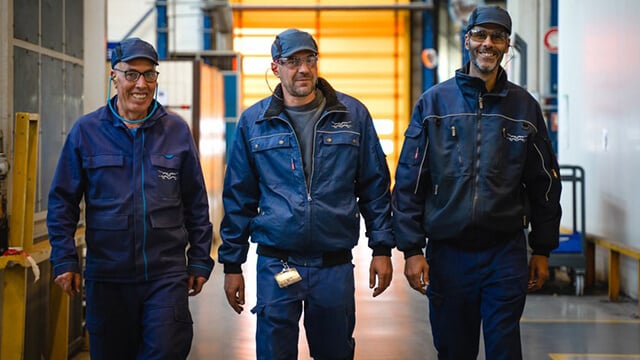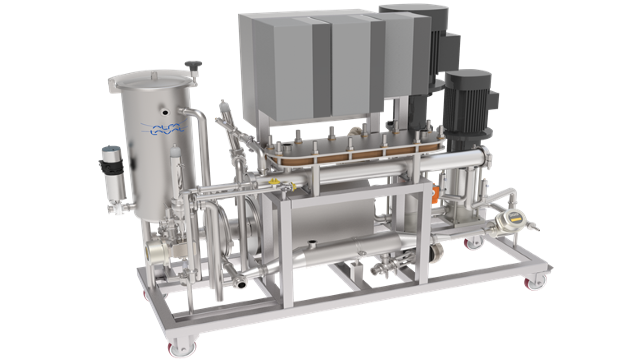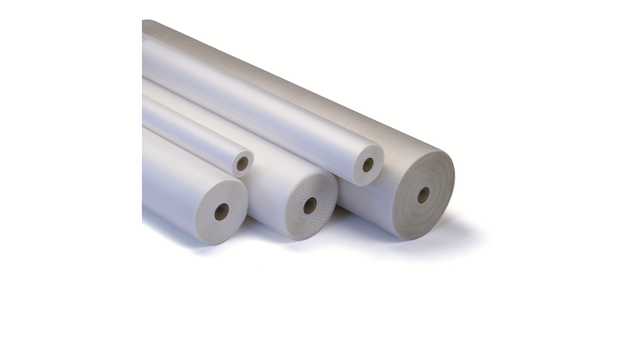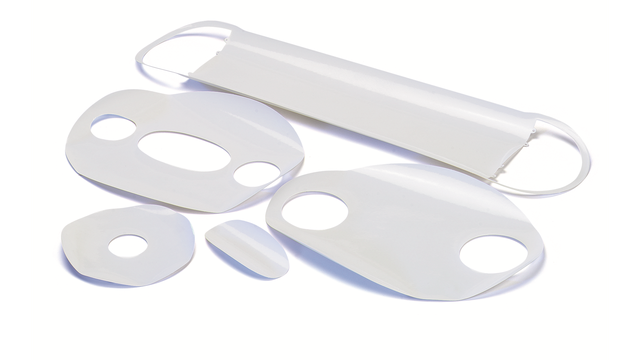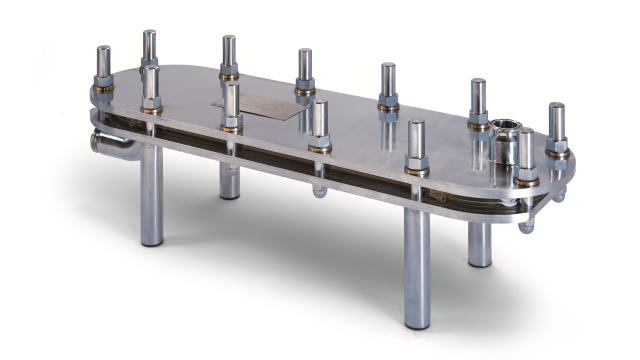PilotUnit Multi
The Alfa Laval PilotUnit Multi is a multipurpose system with a broad selection of options that makes it possible to test all different kinds of membrane filtration products for microfiltration, ultrafiltration, nanofiltration and reverse osmosis in batch or semi-batch mode. It is an ideal tool for easy and reliable scale-up of processes or even small-scale production.
Fully integrated, space-saving and state-of-the-art filtration system with broad selection of options
- Easy to use – fully integrated system on a wheeled stainless steel structure. Data logging included and easy access via USB
- Compact and robust – comprises housing for single 3.8" spiral membrane, 40 l tank, pump, heat exchanger, valves, instruments and control system
- Low hold-up volume for high product concentration and minimal test media amount
- Flexible – pump system can handle low to high viscosity solutions and operates with the whole range of feed spacers (30-80 mil).
- Adaptable – suitable for pHt™ membranes with high temperature and pH tolerance
The basic technology behind membrane filtration involves using a semi-permeable membrane to separate a liquid into two distinct streams.
Pumping this liquid across the surface of the membrane creates a positive trans-membrane pressure that allows any components smaller than the porosity of the membrane to pass through, forming the permeate.
Any components larger than the pore size simply cannot pass through, and remain behind in what is called the retentate. The surface of the membrane is kept free of blockages by the force of the liquid flow moving parallel to the membrane surface.
How it works
The feed stream/retentate flows through the open channels across the membrane surface in the plate-and-frame unit.
The membrane is supported by hollow plates with numerous slots that allow the permeate to be collected and removed from the unit via the permeate collecting tubes.
Plate-and-frame units use the membrane itself, aided by lock rings or strips, to seal off the feed/retentate and prevent any mixing with the permeate. This also prevents leaks from the plate stak itself.
ติดต่อเรา
Related products
Services to extend your equipment performance
We support you with all types of services and training required for high performance and maximal ROI throughout the lifespan of your investment. With Alfa Laval as your service partner, you ensure reliable uptime and high efficiency while keeping total cost of ownership to a minimum.
